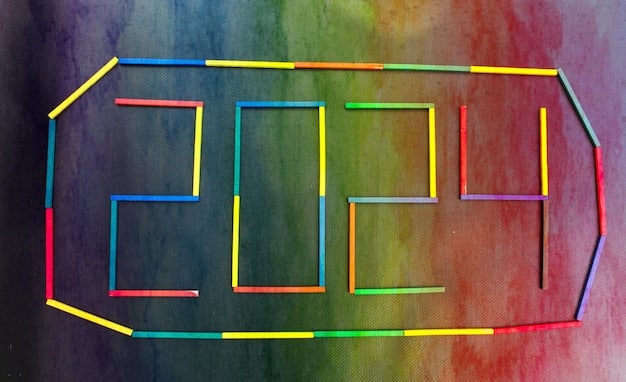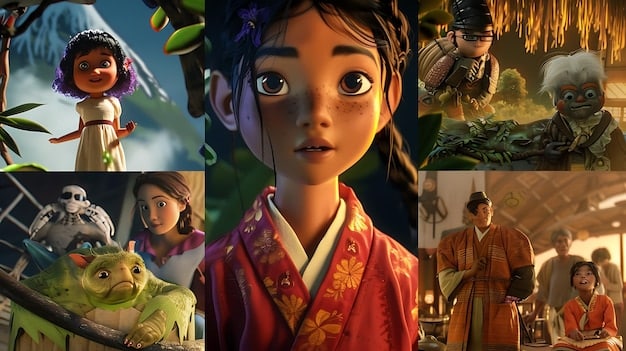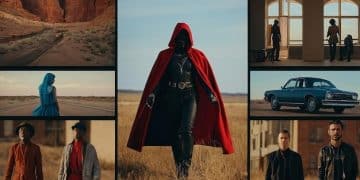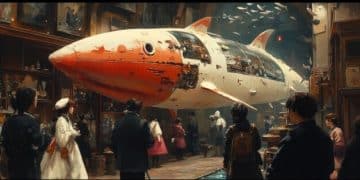The Evolution of International Animation: Stop-Motion to CGI in 2025

The Evolution of International Animation: From Stop-Motion to CGI in 2025 showcases a transformative journey. It highlights the shift from traditional techniques like stop-motion to advanced CGI, impacting storytelling and visuals in international cinema.
Animation has captivated audiences worldwide for over a century. From the earliest experiments with stop-motion to the sophisticated CGI we see today, the journey has been nothing short of revolutionary. This article delves into the evolution of international animation: from stop-motion to CGI in 2025, exploring how different cultures and technological advancements have shaped the art form.
Join us as we explore the fascinating history, key milestones, and future trends that define the world of international animation. We’ll examine how these changes affect the stories being told and the way audiences experience them.
The Dawn of Animation: Stop-Motion Pioneers
The story of animation begins with stop-motion, a technique that brought inanimate objects to life frame by frame. Let’s look at the pioneers who laid the foundation for what would become a global phenomenon.
Early Experimentation and Key Figures
Before CGI, stop-motion was the primary method for creating animated sequences. Several key figures were instrumental in developing this technique.
- J. Stuart Blackton: An American film producer and director, known for his early stop-motion films like “The Haunted Hotel” (1907).
- Émile Cohl: A French caricaturist and animator, credited with creating the first fully animated film, “Fantasmagorie” (1908), which heavily influenced early stop-motion techniques.
- Władysław Starewicz: A Polish-Russian animator who created incredibly detailed stop-motion films using insects, showcasing innovative storytelling and craftsmanship.
These early animators faced numerous challenges, including the time-consuming nature of the process and the technical limitations of the equipment. Despite these obstacles, they created works that continue to inspire animators today.
The challenges didn’t stop the spread of the method, on the contrary, it was a testament to determination and care for the craft.
As animation became more popular, new techniques and styles emerged, reflecting the diverse cultural backgrounds of the animators. This early period established animation as a powerful medium for storytelling and artistic expression.
Global Expansion: Animation Across Borders
As animation spread beyond its European and American roots, it took on new forms and styles, reflecting the unique cultures and artistic traditions of different countries. This global expansion contributed to the evolution of international animation: from stop-motion to CGI in 2025.
Japanese Anime: A Cultural Phenomenon
One of the most significant developments in international animation was the rise of Japanese anime. With its distinctive visual style and storytelling conventions, anime quickly gained a global following.
Often focusing on complex narratives and unique characters, anime brought a totally different perspective to animated productions.
Soviet Animation: Art with a Message
In the Soviet Union, animation was used as a tool for propaganda and education. However, many Soviet animators also created works of great artistic merit, often imbuing their films with subtle social and political commentary.

Soviet animators pushed the boundaries of what was possible with limited resources. Their innovative techniques and storytelling approaches have had a lasting impact on the world of animation.
These examples demonstrate how animation has been used to reflect and shape cultural identities around the world. They show that animation is not just a form of entertainment, but also a powerful medium for expressing ideas and exploring complex themes. The evolution from stop-motion to computer-generated tools allowed more diverse expressions.
The Digital Revolution: CGI Takes Center Stage
The introduction of computer-generated imagery (CGI) marked a turning point in the history of animation. Let’s explore how CGI transformed the animation industry, opening up new possibilities for creativity and visual storytelling.
From Pixels to Blockbusters: The Rise of CGI
CGI allowed animators to create incredibly realistic and detailed visuals. The time and cost efficiencies of CGI also made it possible to produce large-scale animated films.
The advent of CGI changed everything, and the old techniques began to combine with the new in interesting ways.
Key CGI Animated Films and Studios
Several studios and films were instrumental in popularizing CGI animation:
- Pixar Animation Studios: Revolutionized the industry with “Toy Story” (1995), the first fully CGI-animated feature film.
- DreamWorks Animation: Known for its humor and innovative storytelling, DreamWorks produced hits like “Shrek” (2001) and “How to Train Your Dragon” (2010).
- Walt Disney Animation Studios: Though initially hesitant to embrace CGI, Disney eventually produced CGI masterpieces like “Frozen” (2013) and “Moana” (2016).
These studios pushed the boundaries of what was possible with CGI, creating characters and worlds that were more realistic and immersive than ever before. These early successes paved the way for the widespread adoption of CGI in animation.
Blending Traditions: The Hybrid Era
While CGI has become dominant, stop-motion and other traditional techniques have not disappeared. Many contemporary animators are finding ways to blend these old and new methods, creating innovative and visually stunning works. This hybrid era showcases a unique aspect of the evolution of international animation: from stop-motion to CGI in 2025.
The Art of Combining Stop-Motion and CGI
The combination of stop-motion and CGI allows animators to create unique visual effects that would be impossible to achieve with either technique alone.
With the use of both techniques, you could create a very real looking film with great, new characters that have a very distinctive style.
Examples of Hybrid Animation in International Cinema
Several notable films have successfully combined stop-motion and CGI:
- “Coraline” (2009): A stop-motion film with CGI enhancements, creating a visually rich and slightly unsettling atmosphere.
- “ParaNorman” (2012): Another stop-motion film that uses CGI to enhance the characters’ expressions and movements.
These films demonstrate the power of hybrid animation. What was once two different methods start combining to create something new and different.
The hybrid era represents a creative renaissance in animation, as animators are freed from technical constraints and able to explore new artistic possibilities. It’s about pushing boundaries and making the best possible film.

Animation in 2025: Future Trends and Predictions
What does the future hold for international animation? Let’s explore some of the trends and predictions that are shaping the industry, as we contemplate the evolution of international animation: from stop-motion to CGI in 2025.
Technological Advancements: AI and Real-Time Rendering
Artificial intelligence (AI) is beginning to play a significant role in animation. AI is being used to automate tasks like character rigging and motion capture, making animation more efficient and accessible.
AI, for all it’s many abilities, is still in quite an early state, and this makes it uncertain as to whether or not all the predictions for it will come to pass. The advancements are still very important to consider.
The Globalization of Animation: New Voices and Perspectives
As animation becomes more accessible, new voices and perspectives are emerging from around the world. Animators from diverse cultural backgrounds are telling stories that reflect their unique experiences.
This globalization of animation has the potential to enrich the art form. It will lead to more inclusive and representative storytelling.
The Timeless Allure of Animation: Why It Still Matters
Despite all the technological advancements, the core appeal of animation remains the same: its ability to tell stories in compelling and imaginative ways. Let’s reflect on why animation continues to captivate audiences of all ages and backgrounds.
Animation as a Universal Language
Animation transcends language barriers and cultural differences. It is a universal language that can communicate complex emotions and ideas in a way that resonates with people from all walks of life.
A big reason for this could be that it is a visual medium, and visual mediums are considered to be more engaging to the eye than others.
Preserving the Heritage of Animation
As animation continues to evolve, it is important to remember the pioneers and the techniques that laid the foundation for the industry. Preserving the heritage of animation can help inspire future generations of animators.
| Key Topics | Brief Description |
|---|---|
| 🎬 Stop-Motion | Early animation using frame-by-frame object manipulation. |
| 🌍 Global Expansion | Anime, Soviet animation, diversity of animation techniques worldwide. |
| ✨ CGI Revolution | Use of computer-generated images to enhance films. |
| 🤖 Animation in the Future | The use of AI and globalization in the world of animation. |
Frequently Asked Questions
Stop-motion animation is a technique where objects are physically manipulated in small increments between individually photographed frames, creating the illusion of movement when the series of frames is played as a continuous sequence.
CGI revolutionized animation by enabling the creation of realistic and detailed visuals that were previously impossible with traditional methods. It also streamlined the production process, making large-scale animated films more feasible.
A great of example of hybrid animation is “Coraline,” which combines stop-motion with CGI enhancements to create a visually rich and somewhat unsettling atmosphere, showcasing how diverse techniques can blend.
Key figures in early stop-motion animation include J. Stuart Blackton, Émile Cohl, and Władysław Starewicz. Their innovations and early films laid the groundwork for the animation industry.
The globalization of animation brings new voices and perspectives from diverse cultural backgrounds, enriching the art form and leading to more inclusive and representative storytelling. It expands the possibilities for creative people everywhere.
Conclusion
From the humble beginnings of stop-motion to the dazzling heights of CGI, the evolution of international animation: from stop-motion to CGI in 2025 has been a remarkable journey. Animation will continue to evolve, bringing to us ever more inventive and beautiful films.
As technology continues to advance and new voices emerge from around the world, the future of animation promises to be even more exciting than its past. Let us continue to support the art form and inspire future generations of animators.





